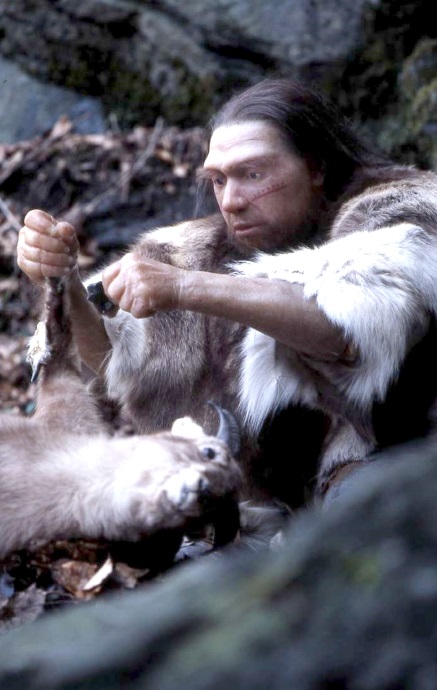Study finds Neanderthals lived clean, neat and tidy
 Most modern humans arrange their homes just the way they like them, and new research suggests Neanderthals did the same thing.
Most modern humans arrange their homes just the way they like them, and new research suggests Neanderthals did the same thing.
Archaeologists at a site in Italy have been investigating the domestic habits of our predecessors, who were bunking down in a rocky shelter some tens of thousands of years ago.
Our evolutionary forefathers could see the sense of packing away their things, taking out food scraps and even central heating,
Findings published in the latest edition of the Canadian Journal of Archaeology indicate that Neanderthals butchered animals, made tools and gathered around the fire in different parts of their shelters.
“We found that Neanderthals did not just throw their stuff everywhere but in fact were organised and purposeful when it came to domestic space,” said University of Colorado anthropologist Julien Riel-Salvatore.
“There has been this idea that Neanderthals did not have an organized use of space, something that has always been attributed to humans.”
At the excavation site in northwest Italy, researchers found that Neanderthals divided their cave into different areas for different activities.
The top of the cave area was used for general activities – mostly hunting-related – providing a good stand where they could kill and prepare game. A large amount of animal remains were found in the rear of the area, indicating that it was likely used for butchering game.
In the middle living area of the large cave artifacts were distributed differently; animal bones were concentrated at the front rather than the rear, this was also true of the stone tools, or 'lithics'.
There was a large fire pit at the back of the cave just under a metre from the wall. The fireplace location would have allowed warmth from the blaze to circulate well throughout the living area.
Researchers even found that Neanderthals observed good OHS practices.
“There are clearly fewer stone artifacts in the back of the shelter near the hearth,” Riel-Salvatore said.
“When you make stone tools there is a lot of debris that you don't want in high traffic areas or you risk injuring yourself.”
Ongoing research into hominins shows that the species was much more advanced than originally thought. Recent studies have shown they made bone tools, ornaments and projectile points. Another paper has demonstrated that interbreeding between Neanderthals and humans means they are a fundamental part of us, and we may have led to the ultimate demise of the outnumbered Neanderthal.
Neanderthal genes make up between one and four percent of today's human genome, especially among Europeans.
“This is ongoing work, but the big picture in this study is that we have one more example that Neanderthals used some kind of logic for organizing their living sites,” Riel-Salvatore said.
“This is still more evidence that they were more sophisticated than many have given them credit for. If we are going to identify modern human behaviour on the basis of organized spatial patterns, then you have to extend it to Neanderthals as well.”
More information is available in the complete report, accessible here.








 Print
Print